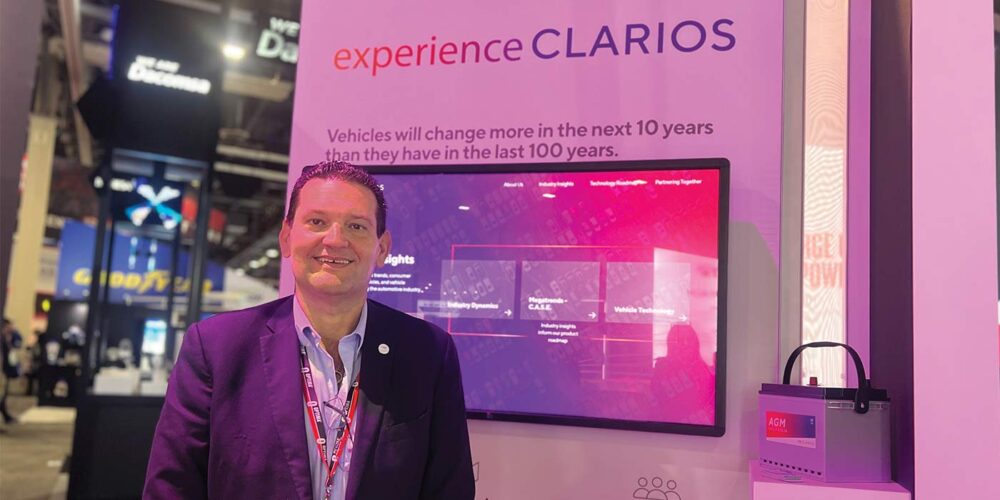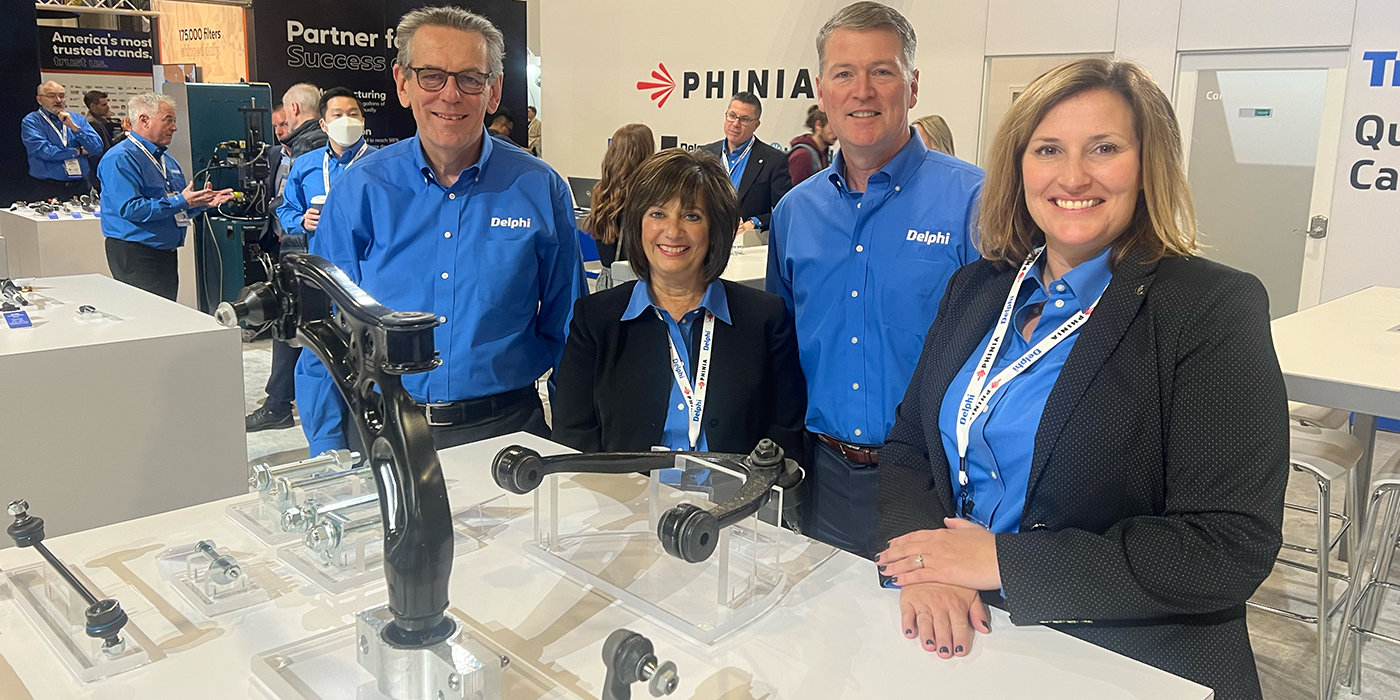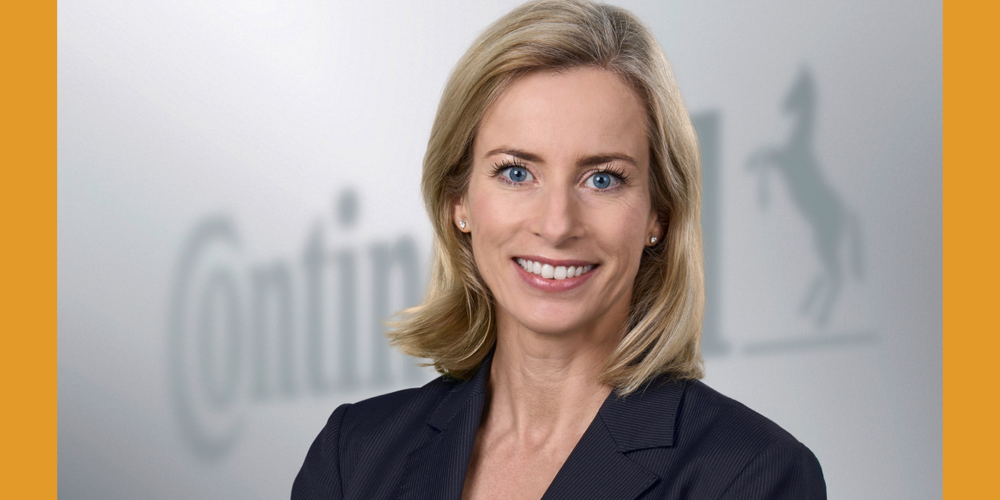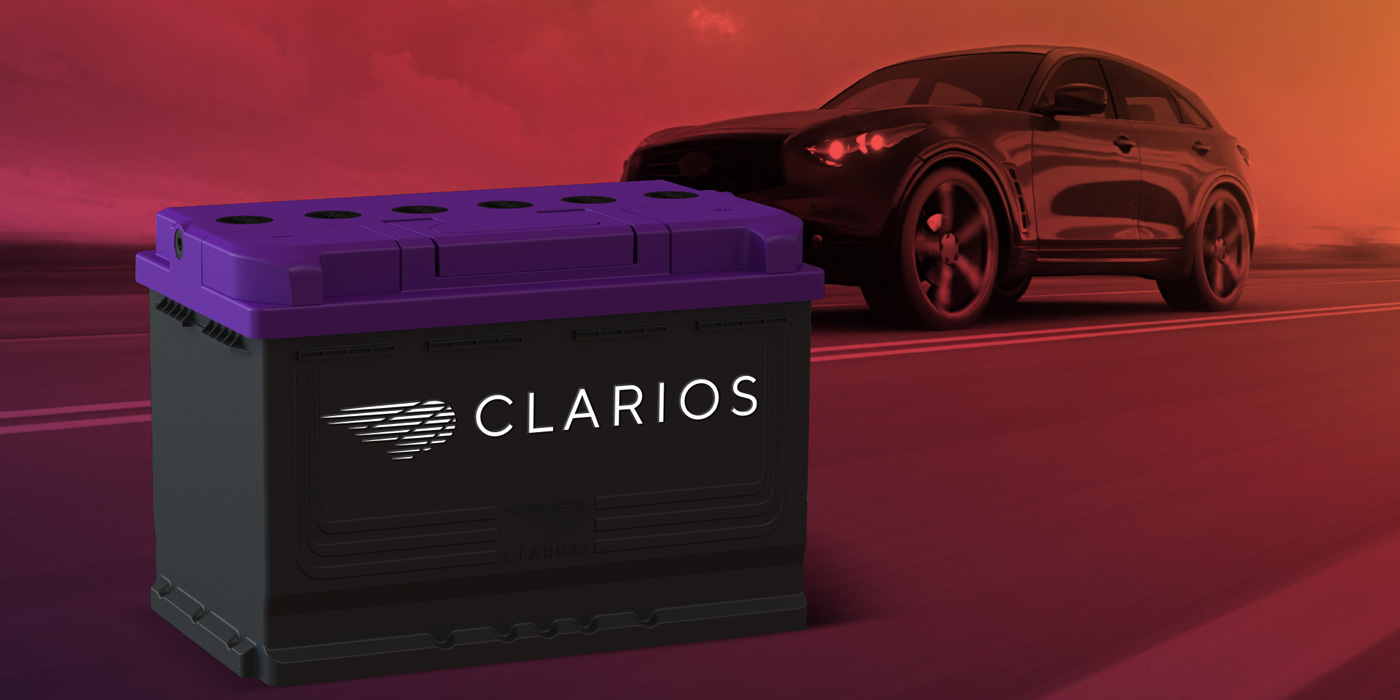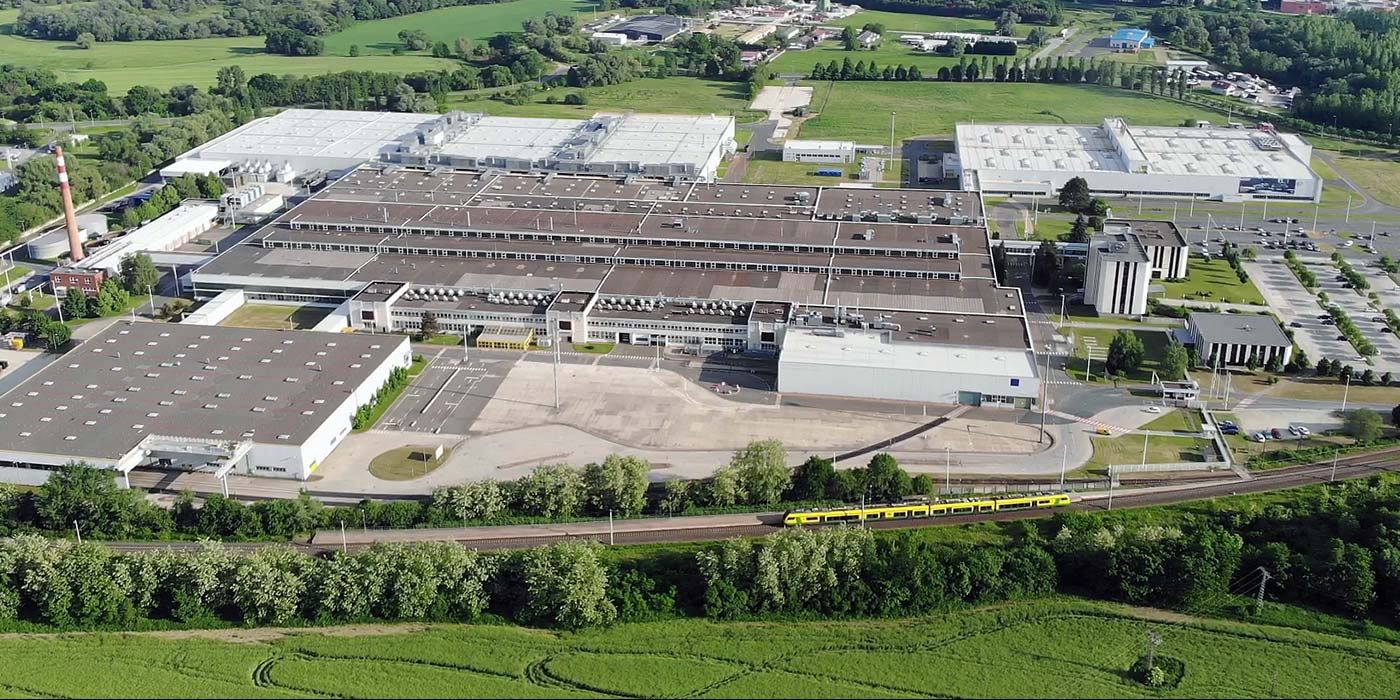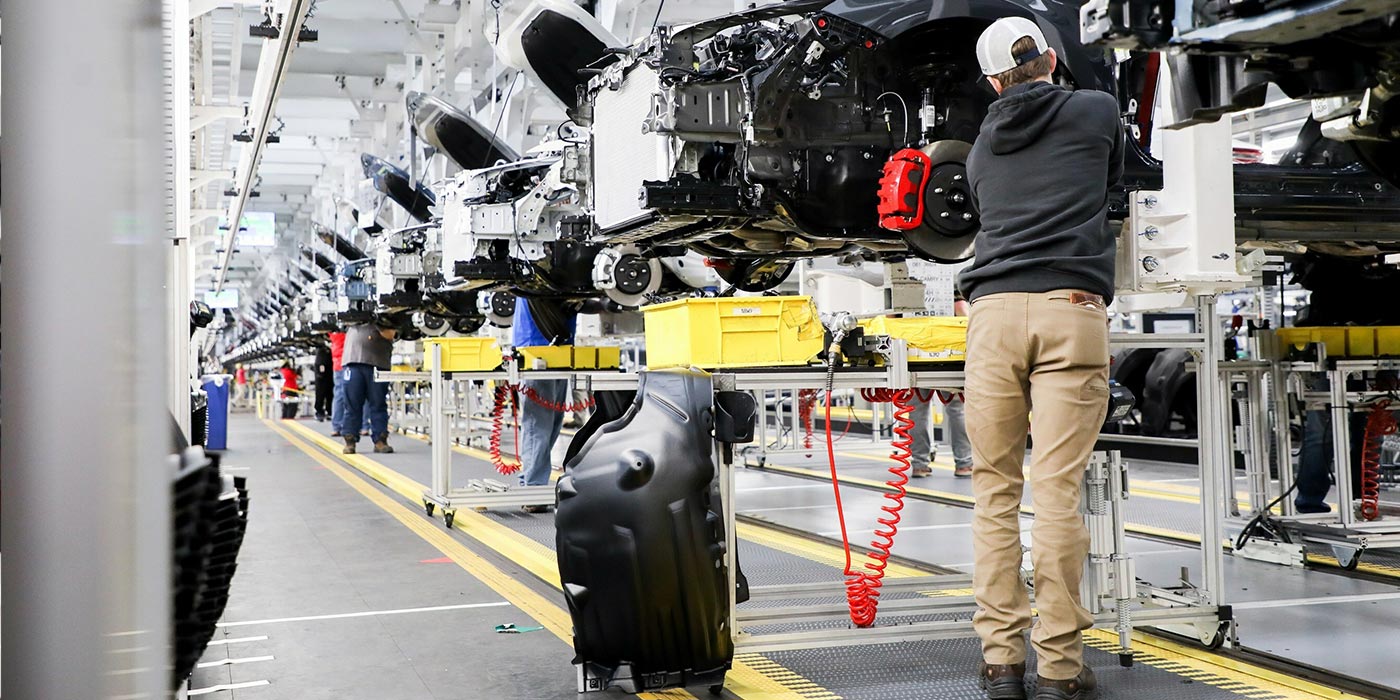As electric vehicles continue to gain popularity, auto parts manufacturers are looking to the future. Battery maker, Clarios, is one of those companies ensuring its products can handle vehicles on the road today and those coming down the line. To do this, it is putting its money where its technology is and investing in R&D and production capacity, especially when it comes to its AGM (absorbent glass mat) batteries to make sure it can supply the products the market needs.
In this AMN Executive Interview, we caught up with Gerardo González Aleu, president, US & Canada, at Clarios, at the 2023 AAPEX Show to dig into how the company is investing for the future and focused on a chemistry-agnostic approach to its product lines.
aftermarketNews: In the last year, Clarios has made some significant investments and product introductions in its AGM product line, including with the Clarios SMART AGM. Tell us about that product and its applications currently.
González Aleu: This product addresses the current automotive technology evolution in terms of electrification and data collection, as well as information sharing. As we continue to see the electrification of vehicles, we developed a different kind of battery on the low voltage side. We took our already advanced AGM battery and developed a SMART AGM version that can connect to the vehicle’s information system.
So, with this product, we can monitor battery performance in real time. With that, we can do two things: First, we can deliver the right amount of low voltage to the system to enable the car to work better. And second, we can enable real-time diagnosis so the vehicle can tell you when you need to change the battery.
With the SMART AGM battery, we initially started work on the heavy-duty side because of the vast applications in that segment. Right now, we are gathering information on how the product is working – the electronics and the connectivity, and the data that we can gather. And we are planning to apply this technology in other products.
AMN: Do you feel the SMART AGM will create a new industry standard for battery technology?
González Aleu: I would say that the functionalities that we are adding to, in this case, the SMART AGM, are moving us from strictly the battery product into information systems and then to services. And I believe that’s the future of the battery.
It is not just a black box with electricity, right? It’s about what the product can deliver if we connect it to the car. I believe that’s the new standard that is going to drive the future in the battery industry.
AMN: Yeah, it’s all a part of the automotive ecosystem. Keeping on the subject of AGM batteries…last year, you all announced a significant investment in, and expanding production of, AGM batteries. What makes that segment so attractive?
González Aleu: So, AGM has been in the market for a long time already. We started to see a reduction of emissions when used in start-stop vehicle applications. That helped to reduce emissions somewhere between 5% to 10%. Now, what is important is that the AGM battery has become not only the source of 12-pulse energy for those kinds of vehicles but also an option to support the electrification the vehicles.
Manufacturers have been evolving their cars by adding infotainment, connectivity, safety systems and more peripheral equipment. All of that is managed by low-voltage systems. AGM allows vehicles to move through more cycling capacity to sustain all those peripheral systems.
Our investment in AGM, not only shows our commitment as a company to advanced battery technologies but also shows that we’re ready for the future. We are doubling the capacity in North America for making these batteries because we see that demand coming.
AMN: And it will get stronger over time, you’re saying?
González Aleu: We are doubling our capacity in North America because we forecast the needs of the industry and what products it will require. We’re doing this in the United States and North America and in places like Europe. Of the $550 million we’re investing in AGM, about $150 million went to Europe. We also opened a plant in China in October 2022 to support this growth. So, our investment in this technology is global.
AMN: So, we’re at AAPEX and I know you all are exhibiting your various product lines. Tell us about some of the highlights.
González Aleu: Our booth at AAPEX is a tribute to the journey of vehicle technology and energy sources. We are exhibiting all our different technologies in low-voltage energy sourcing, or energy storage, to support the electrification of vehicles. Part of what we are launching is that chemistry-agnostic path forward to work with different vehicle technologies and different chemistries.
Clarios is not only working on lithium ion and lead-acid batteries, we are also researching and developing other kinds of materials for the future of electrification. Here at AAPEX, we are communicating to our customers and the public our chemistry-agnostic mindset – that Clarios will support the electrification of any different powertrain and path in the automotive industry. That’s the most important piece.
AMN: So, whether it’s lithium-ion, AGM, whatever direction the market goes, Clarios is ready.
González Aleu: Exactly. Of course, in each application, there are different materials and technologies that you use.
The other thing that is important to know is that if you look around our AAPEX booth, you will see a lot of brands: Clarios, Optima, Delkor, VARTA… These are our brands from around the globe. This speaks to Clarios’ leadership in this space serving different markets and consumers globally.
We are proud of being able to provide batteries for many private label customers in the United States, but at the same time, we have our own brands that position us as a leading company with a global footprint.
AMN: I know this year Clarios acquired Paragon’s Battery Unit. Paragon is a company that develops and produces automotive electronics, including batteries and battery management systems. How will this addition, in your view, help the company expand its offerings?
González Aleu: So, as you know, we partner with automotive manufacturers to understand and help figure out electrification, automation, connectivity, digitalization, etc. As we talked about, we have been taking a more systems-based approach.
Paragon is actually the perfect e addition to Clarios because it brings tremendous additional engineering, research and development expertise focused on connectivity and battery management systems. The other important part is the relationship they have with the OEs in certain areas of development and manufacturing regarding lithium-ion. We are very excited about this strategic addition to our business since we expect things to accelerate in lithium-ion.
AMN: How would you say Clarios is balancing developments for ICE, electric and other alternate powertrains?
González Aleu: I think that that’s a very interesting question. So, I believe that about 20% of the vehicle population right now is already requiring advanced technology batteries to power all of the additional peripheral and safety equipment. And in 10 more years, if not sooner, we’re going to be talking about 50% of vehicles entering into that realm. So, the good thing about this chemistry-agnostic thinking and approach is that we are developing the technologies that each segment needs.
At the same time, we are continuing to evolve in the lead acid world, with AGM with the most mature vehicle population, SLI (starting, light and ignition) batteries, as well the start-stop with an AGM solution, and then also in lithium-ion. The future will need a mix of chemistries, but we are taking a systems approach, increasing our value proposition by moving beyond just the battery to software/electronics and diagnostics.
That’s how we are thinking when it comes to chemistry and the investments we’re making. We’re innovating to serve every car, every powertrain and every type of electrification. We have the technology and the capacity to fulfill those needs.
Our investment in AGM is a great example of how we are preparing for the growth of advanced batteries driven by the automotive technology transition. We believe in an evolving portfolio to give the right energy source to address each need of the end consumer.
AMN: Lastly, what do you want your customers to know, especially in the North American aftermarket, come 2024?
González Aleu: I believe that 2024 and the coming years will be very interesting for Clarios and our customers. The first thing is that we’re going to do is continue to launch new, advanced technologies. Everybody can expect that. We will also continue to expand in certain geographical markets.
We are always exploring adjacent spaces that have to do with energy storage and additions that can bring value—for example, with Paragon. So, we are open to that as a path for growth.
More than anything, we will continue to partner with our customers, not only in original equipment but also in the aftermarket. We know that all these technologies are going to change the way that the aftermarket is served and we are prepared to lead that transition with them

